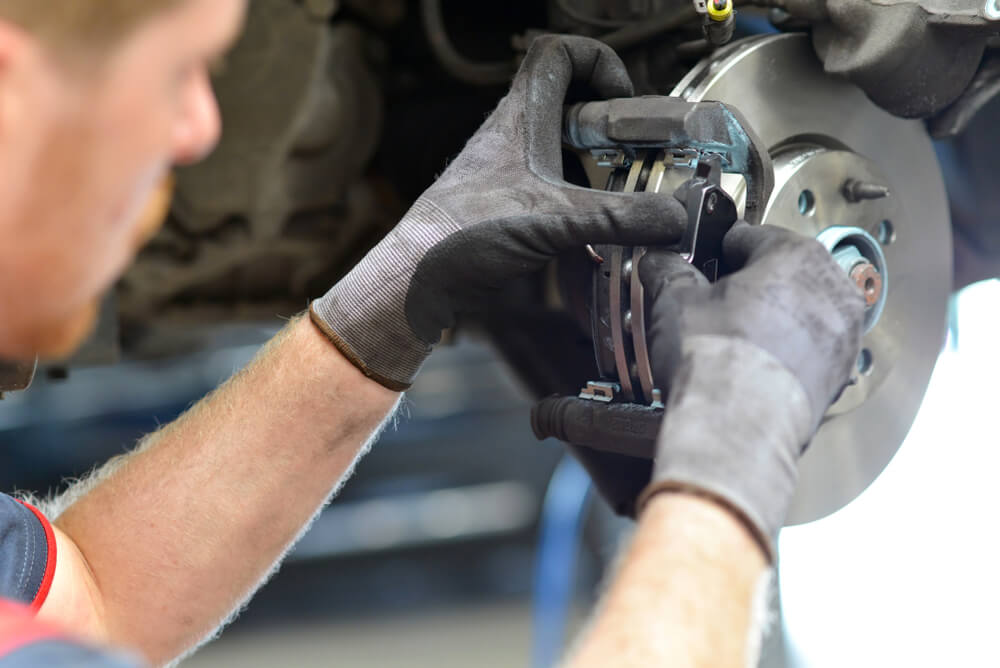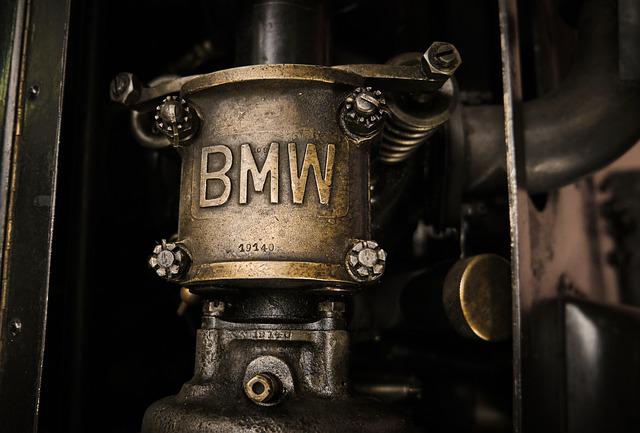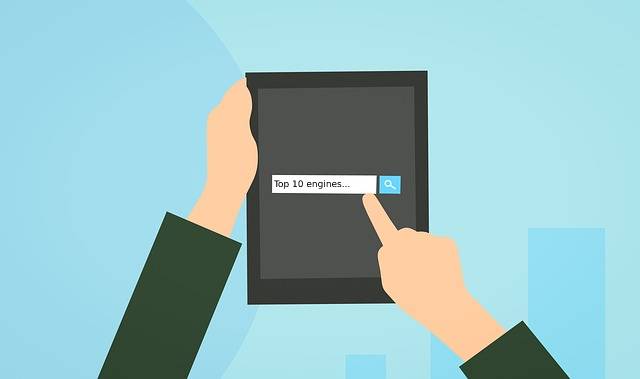Brake Problems: A Risk Not To Be Taken
Find Used Engines and Transmissions for a Great Price! Live Assistant For Used Engines Call 1800-518-9776

Owing a car brings a lot of responsibilities. Not only for keeping the car in good condition but also for the people who are on the road along with you. You or yours should not be the reason for harm caused on the roads.
One such component that should not be hindered at any cost is the brakes. The system that controls the whole system of the car, failure of which can result in tragedies on the roads. The breaking system consists of many components, each of which performs an immeasurable amount of work to keep the automobile from getting into collisions and accidents.
In this blog, we will be exploring the types of brake problems and ways to fix them so that you can have safer and smoother drives with peace of mind.
Worn brake pads: System and fixes
Symptoms:-
Squeaking or Squealing Noise: High-pitched noises made when braking may be an indication of worn brake pads. A metal wear indicator that has touched the rotor is the source of this noise.
-
Weird grinding noises: When the brake pad material is nearly gone and the metal backing plate is rubbing against the rotor, there will be a grinding sound, which indicates significant wear.
-
Reduced Braking Performance: If your car stops more slowly or feels less sensitive when you apply the brakes, it's probably because the brake pads are worn out.
-
Pulsations and vibrations: Inconsistent brake pad wear or rotor damage may be indicated by the brake pedal vibrating or pulsating.
-
Brake Warning Light: Brake warning lights in contemporary cars are activated by sensors that detect excessive brake pad wear.
-
Replacement of Worn Brake Pads: Installing fresh brake pads in their place. Utilising pads that are compliant with your vehicle's specs is crucial.
-
Rotor examination: Inspect the brake rotors for wear or damage. If they are broken, think about resurfacing them or replacing them.
-
Competent service: for brake pad replacement, seek professional assistance if you're unsure of your mechanical abilities. The installation may be made correctly by a licenced mechanic.
-
Top-notch brake pads: To ensure durability and dependable performance, spend money on premium brake pads.
-
Regular Maintenance: Perform regular checks and replacements on your brake system as directed by the manufacturer.
Stuck brake callipers
Symptoms:-
Uneven Brake Pad Wear: A blocked calliper may be the cause of one brake pad being much more worn than the others.
-
Vehicle Pulling: A jammed calliper may be the source of uneven braking force if your car pulls to one side while braking.
-
Heat Buildup: A stuck calliper can generate excessive heat in the brake that is being impacted, which might result in a burning odour or even smoke.
-
Vibration: Uneven braking brought on by a stuck calliper might generate vibration in the brake pedal or steering wheel.
-
Reduced Fuel Efficiency: An immobilised calliper increases rolling resistance, which reduces fuel efficiency.
-
Calliper Lubrication: When callipers aren't properly lubricated, they can become stuck. The movement of the brake calliper can frequently be made more fluid by using a proper brake calliper lubricant.
-
Callipersr Pins: Clean and lubricate the calliper slide pins. The calliper can move freely because of these pins. If they're corroded or broken, replace them.
-
Retracting the piston: If the calliper piston is jammed, carefully retrace it using a brake piston tool or a g-clamp. This could relieve pressure on the brake pads.
-
Calliper Replacement: In some circumstances, a severely stuck calliper may require replacement, especially if it is irreparably rusted or damaged.
-
Bleeding the brake fluid: Problems with the calliper can result from air in the brake lines. To guarantee proper fluid flow and calliper performance, bleed the braking system.
Leaking brake lines
Symptoms:-
Brake Fluid Puddles: Under the car, particularly close to the wheels, there may be visible puddles of clear or light-colored fluid that could be brake fluid leaks.
-
Soft or Spongy Brake Pedal: Air leaking into the brake lines can lead to a soft, spongy brake pedal that takes more effort to apply the brakes.
-
Brake Warning Light: The dashboard's brake warning light may come on if there is insufficient brake fluid due to a leak.
-
Visible Corrosion: In areas with harsh weather, corroded or rusted brake lines may be more likely to create leaks.
-
Examine and establish: Examine the brake lines, connectors, and fittings closely to find the leak's cause.
-
Replace Corroded or Visibly Leaking Brake Lines: Brake lines that are corroded, visibly leaking, or otherwise damaged require replacement. Use lines that are compatible with your vehicle's requirements.
-
Fix Fittings: Sometimes, leaks are caused by faulty fittings. Make sure that all connections are snugly fastened to avoid leakage.
-
Flare Fittings: Re-flare or replace the fitting if the leak originates at a connection point to ensure a tight seal.
-
Brake Line Repair Kit: A brake line repair kit can occasionally be used to temporarily fix minor leaks. However, replacement is typically the best course of action.
Malfunctioning ABS system
Symptoms:-
ABS Warning Light: An issue with the anti-lock braking system is indicated by the ABS warning light on your dashboard continuing to illuminate.
-
Pulsating: When braking normally, a pulsating sensation in the brake pedal may be a sign that something is wrong with the ABS system.
-
Unresponsive ABS: The ABS system should activate when driving on slick surfaces to prevent wheel locking. There is a problem if your wheels lock even with the ABS on.
-
Unusual Sounds: Unusual sounds, such as clicking or buzzing, during braking may point to issues with the ABS system.
-
Problems with braking performance: ABS faults may be the cause of inconsistent braking or longer stopping distances, particularly in difficult driving situations.
-
Diagnose: To help pinpoint the precise problem inside the system, get the ABS error codes using a diagnostic tool.
-
Sensor inspection: Inspect the wheel speed sensors for deterioration, damage, or disconnections. If required, clean or replace malfunctioning sensors.
-
Ring check: Check for fractures, damage, or debris on the toothed ring (tone ring) of the ABS. This ring, which is close to the wheel speed sensor, is essential to the sensor's functionality.
-
Fluid: Make sure that the brake fluid is at the proper level and that the system is properly bled. Air bubbles in the brake lines might cause issues with the ABS system.
-
Fuses: Check the ABS-related fuses and relays to make sure they are not blown or malfunctioning.
Overheated brakes
Symptoms:-
Burning Smell: Overheated braking components may cause a strong burning smell, which is frequently described as chemical or metallic.
-
Smoke: Visible smoke coming from the brakes or wheels is a surefire sign that the engine is overheating.
-
Soft Brake Pedal: When brake fluid boils due to overheating, it becomes spongy or soft and less sensitive.
-
Reduced Braking Performance: Brakes that are too hot can have diminished braking ability, longer stopping distances, and even brake fade.
-
Vibration or Pulsation: Uneven material transfer onto the rotor brought on by overheating might result in vibrations or pulsations when braking.
-
Cooling Period: If you experience signs of an overheated brake, pull over in a secure location and let your brakes cool. During this time, don't apply the brakes a lot.
-
Brake fluid: Brake fluid should be checked; if it has boiled, it may need to be changed. Remove air from the braking system by bleeding it, then top off the fluid.
-
Examine the brake parts: Check the brake pads, rotors, and callipers for any evidence of overheating-related damage or warping. Replace as required.
-
Rotor Resurfacing/Replacement: To guarantee optimum braking effectiveness, the rotors may need to be resurfaced or replaced if they are distorted as a result of overheating.
-
Pad examination: Look for glazing (a shiny look) or excessive wear brought on by overheating in the brake pads. Upgrade worn out pads.
Contaminated brake fluid
Symptoms:-
Discoloration: Brake fluid ought to be clear or slightly yellow. The presence of particles, moisture, or oxidation causes contaminated fluid to appear dark or murky.
-
Soft or Spongy Brake Pedal: The effectiveness and responsiveness of braking can be decreased by a soft or spongy brake pedal caused by air or moisture in the fluid.
-
Brake Fade: When braking for a long period of time or with strong braking, contaminants can lower the fluid's boiling point.
-
Corrosion: When a brake system's internal components, such as callipers, lines, and the master cylinder, are exposed to contaminated fluid, internal corrosion results.
-
Increased Wear: Components used in brakes, such as seals, pistons, and ABS valves, might experience increased wear as a result of contaminants.
-
Moisture absorption: Brake fluid collects moisture over time because it is hygroscopic, which results in diminished performance.
-
Dirt and Debris: During fluid changes or due to a lack of cleanliness during maintenance, contaminants may enter the system.
-
Fluid Degradation: Over time, brake fluid can degrade, producing sludge and pollutants.
-
Component Deterioration: The brake system's ageing seals and other parts might leak debris into the fluid.
Conclusion
In the conclusion of this blog, we came to an understanding of what different types of brake issues can arise, how to look out for them, and finally, how to fix them before they result in any type of accident or trouble.
Keeping a keen eye out for the symptoms your car is giving is crucial to the maintenance of your car and the safety of people in and around it.
Used Engines is the perfect place for you to get your used engines and transmissions met. We provide standard quality products and services so that the customer can have a great experience and peace of mind.
related
You May Also Like

Which BMW Has the Most Horsepower?
A car is useless if it doesn’t have good horsepower. Just imagine driving your car with sluggish acceleration and it drags on the road whenever you take it for a spin.
Read Article
10 Best Engines Made So Far By Top Engine Manufacturers
Over the years, the car industry has seen major changes. Car engines have become smarter and it looks like every new engine that rolls out is better than the other.
Read Article
How to Make Your Car Last Forever?
Isn’t it lovely when a new car works the way you want? The gears shift smoothly and the wheels roll without dragging against the road. But as your car gets older, you’ll notice that it doesn’t drive smoothly, has lower fuel mileage, and overheats easily.
Read Article